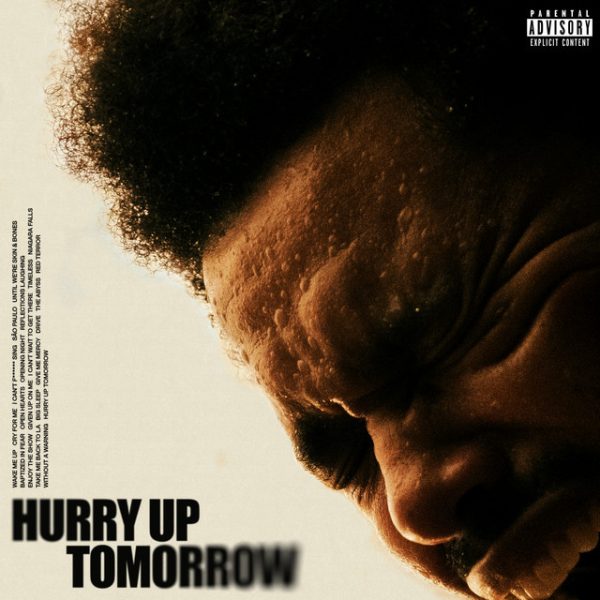Best Beats: A Comenian Playlist

“Ceremony” New Order, 1981
I don’t know how other college students feel about March, but it can be a drag for me. The end of the semester still seems so far away, so around this time I need a good motivational song.
New Order’s “Ceremony” is no “Eye of the Tiger,” though. Sure, it has a certain energy to it, but how could a song that opens with the line “This is why events unnerve me” be motivational?
I can see why people might question the uplifting spirit of the song. To truly understand my view, though, one needs to the know the story behind it.
Before New Order, there was Joy Division. In the late 1970s, the post-punk quartet — consisting of guitarist Bernard Sumner, drummer Stephen Morris, bassist Peter Hook, and vocalist Ian Curtis — garnered critical acclaim.
On the eve of Joy Division’s U.S. tour in 1980, Ian Curtis committed suicide. Most of the songs he had written for Joy Division had already seen an official release. He left two behind, though: “Ceremony” and “In A Lonely Place.” Even though it had been demoed and performed live, Joy Division had never released an official version of “Ceremony.”
After Curtis’s suicide, Sumner, Hook, and Morris recorded “Ceremony.” It was soon released as the debut single of New Order, with “In A Lonely Place” as its B-side.
New Order’s resolve to record songs written by Curtis less than a year after his suicide strikes me as incredible. It must have been hard for the band members not to let their emotions get the better of them during the recording process.
New Order’s decision to keep going is what makes the song so motivational to me. It shows that great things can be born out of tragedy. “Ceremony” has the “Joy Division sound” with Hook’s melodic bass and Sumner’s imitation of Curtis. It is nothing at all like the later hits New Order would have (i.e. “Blue Monday” and “The Perfect Kiss”), but without the band’s resolve to regroup and record “Ceremony,” perhaps those hits would never have existed.
-Nathaniel Rhoads
“Fakin’ it” Simon & Garfunkel, 1967
Towards the middle of every semester, we all start “fakin’ it,” but no two people explain it better than Paul Simon and Art Garfunkel. The iconic musicians had a magical way of taking every mood and turning it into a catchy song.
“Fakin’ It” was released in 1967, but it’s lyrics extend to any time period. The protagonist in the song ponders his insecurities and shortcomings while contemplating the “what ifs” that plague everyone’s mind.
Although the song’s lyrics are somewhat depressing, the duo’s calming voices make up for the dismal conclusions. The song remains consistent with the folk-rock genre of the 1960’s, which means that anyone who enjoys The Beatles and Bob Dylan would love this song.
This is also a great tune to listen to if you are feeling down because it makes you realize that even Paul Simon, the song’s writer, whose net worth is estimated to be $55 million, was just fakin’ it until he was makin’ it.
– Kaytlyn Gordon
“Book Club” by Arkells
Calling all bookworms, this one is for you! “Book Club” by the Canadian rock band Arkells features a narrative between two old friends bonding over books with some musical puns in between the lines. This song hides in plain sight as the first song of the album “Michigan Left,” just one of their five albums on Spotify.
With a catchy hook, this song screams summer with a touch of romance. Arkells takes you through a dance between two people, perhaps lovers (you decide), talking about classics over the radio. Throughout, the two return to their roots, their hometown, and their commonalities over a glorious melody and clever lyrics.
With only 2 million listens on Spotify, this song is far from Arkells’ most popular but just may be the winner-take-all. Their pop-rock vibe combined with their repeating sweet lyrics provides Arkells with an overlooked hit song. For an added bonus, locate the acoustic version of this song. It may take some digging on YouTube but it’s worth the hunt. If you find yourself in your “brand new Audi” on a gorgeous 75o F day, roll those windows down, slide those shades over your eyes, take the aux cord, and cruise along to “Book Club” by Arkells.
– Emily Sangirardi
“The Nylon Curtain” Billy Joel, 1982
Billy Joel is a classic to Americans, and almost anyone you ask knows at least a few of his songs. He’s one of the most iconic artists of New York City: his popularity allows him to fill up baseball stadiums monthly and keep a 56-month residency at Madison Square Garden (which is a world record). However, many people do not realize how long and how successful his career really is.
“The Nylon Curtain” is a perfect example of why Billy Joel is so popular. The album is his eighth studio album out of thirteen, being released in 1982. With this album, Joel wanted to focus on a very serious and specific mood that people felt in the years after World War II and during the Cold War. He used his characteristic soft rock songs that feature his iconic piano and classic storytelling techniques to capture the disillusionment many Americans were feeling. Joel and critics agree that this album was one of his best works; Joel even says that this is his favorite album he created.
The songs of the album are a meditation on the diminishing lifestyles of the past during the Reagan years and the repercussions it had on the American Dream. No song better demonstrates this central idea than his opening track “Allentown.” Well-loved in the Lehigh Valley for his homage to Bethlehem Steel and its employees, the song tells the story of thousands of workers coping with the downfall of the steel industry and the diminishing blue-collar jobs. The song is melodic and upbeat, highlighting the hope that the laid-off workers clung to in order to have a better future, despite their changing lives. Joel says it best himself, singing, “it’s hard to keep a good man down, but I won’t be giving up today.”
Another popular song that resides on this album is “Pressure,” a synthesizer-driven song which expresses the feelings of the decades after the World Wars, which include the pressure to provide and create, as well as act like you have everything under control.
“Goodnight Saigon” is one of the most emotional songs on the album, and is possibly the best example of how Joel masterfully captures the emotions of a generation. It is a 7-minute song that explains through words, music, and added sounds the horrible, and at times brotherly, experiences of drafted soldiers in the Vietnam War. The melancholy music mixed with the sounds of army helicopters and nature creates a vivid experience to help the everyday listener take a step back in history.
The rest of the songs, including lesser known songs such as “Laura,” “Surprises,” and “Scandinavian Skies,” continue to reminisce on the pervasive feelings of hopelessness, isolation, disillusionment, and lost love.
Overall, the album is an easy listen with its melodic music and soft songs, but when one looks further at the themes, meanings, lyrics, and formats of the songs, the listener can start to understand the feelings and emotions of a generation outside of theirs and apply their life lessons to our own lives.
-Elizabeth Horn











